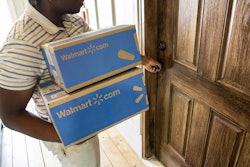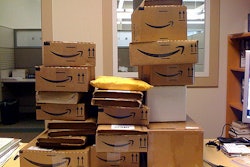
Planning, promotions and projections for a retail season come to fruition—and suddenly there is an about face and the success turns into a deluge of returns. While the Internet of Things creates joy in consumers’ hearts, it creates misery in the minds of retail planners, inventory managers and financial analysts when the double-digit volume growth turns into double-digit returned product.
Statistics gathered tell you that 8 to 9 percent of goods purchased at stores will be returned and that 25 to 30 percent of e-retail orders will be sent back. For all the sophistication, experience, and expertise of retail buyers and supply chain leaders, the exhaustion invoked by deciding what to do to mitigate the cost of returns can be best managed by seeking expertise.
Traditionally, retailers assumed responsibility for handling returns as it was considered a service for increasing customer loyalty, and not always a conscious strategic consideration when planning merchandise and supply chain networks.
A simplistic method was, if returned items were originally purchased in the store, the consumer was required to return them to the store. The consumer was required to return items purchased online by mail. The returned good was restocked, returned to vendor, donated or destroyed. That was then and it no longer works.
Returns policies are becoming as important to the stores’ brand and customer loyalty as convenience, merchandise and price. The shop-anywhere mentality transcended to return anywhere and the complexity continues. Some consumers find it more convenient to return an online purchase to a store. Some consumers find it more convenient to return the product by mail, whether bought in a store or online. In fact, retailers prefer purchases to be returned to the store, offering immediate credit and upsell/cross-sell opportunities, and the retailer does not have to pay for the cost of shipping the return. Some data reflect that as many as 90 percent of some retailers already have 90 percent of all e-commerce purchases returned to their retail store.
Complexity, change and uncertainty are best resolved with expert guidance. For many years, and more so in recent years, there are logistics companies specializing in reverse logistics. They build upon lessons learned over time, and can offer a retailer, or a manufacturer, best practices for mitigating risk and costs in handling returned goods through the supply chain. What will these experts tell you?
Dedicated Returns Operations
Returns of 1 to 2 percent of your sales can likely be handled in the back storeroom, and returned to the vendor, donated or destroyed. If returns are 10 to 30 percent of your sales, your back room will not be sufficient or timely for handling the returns. If returns are not able to be restocked, your choices are to ship the returns to your distribution center and process them there, or seek an alternative solution.
What are the details of our vendor agreements? Flexibility in these agreements enables returns to be processed faster to ensure optimal recovery value. Collaboration with vendors, to agree on the best strategy, will identify a specific process by item to return to vendor or resell to the secondary market early in the reverse cycle.
Unless your distribution center is designed with a dedicated area, work process and system to handle returns, you are likely to add two weeks to a month in processing time. The longer a product sits and is not available for sale, the costs of the product increase and the potential selling price decreases.
What about a Dedicated Returns Center?
A reverse logistics expert will engage the retailer or manufacturer in a collaborative discussion to ascertain requirements, expectations, value-added services and ultimately the cost to implement. A good expert will advise you on the inherent value of a dedicated returns operation—embedded in a distribution center or as a stand-alone facility.
The following should be included in the design of a returns operation:
- Ability to manage the flow of product and information, from the store, through load tendering, pickup and delivery, to the return center, returns processing, return merchandise authorization (RMA) management, credit reconciliation and disposition management.
- Implementation of data-driven reverse logistics software that initiates visibility to the returned item at the store or during the online RMA registration.
- Returns center operations designed to align with product type, volume, special handling and storage requirements.
- Determination of the value-added service return on investment: Should the product be processed through a triage to determine if the unit can be repaired, refurbished, repackaged and restocked? Does the product have a short lifecycle and rapidly declining price so the value-add service becomes liquidation as soon as possible? Is an inspection process valuable to determine the level of damage to make a fast decision of return to vendor or recycling/destroy?
Dedicated returns operations, managed by an experienced staff, can provide a 10 to 15 percent reduction in costs related to excess inventory, returns processing, and asset liquidation by using a systematic, automated and proven returns process.
Customizable Reverse Logistics Software
Once a manual process, the returns process becomes systematic to reduce handling, damage, and costs of labor and transportation. The up-front cost of implementing efficient reverse logistics software may initially seem daunting, but assuredly, the investment will provide great relief in overall costs with a return on investment in as little as six months.
Why Invest in a Customizable Process System?
Data and visibility are the leading reasons why the system brings great value. Replacing gaylords of unknown product are tagging and scanning of individual items at the point of return. This initial data capture enables end-to-end visibility to what, where and when the product was received at each touch point until it reaches its ultimate disposition.
Best-of-breed reverse logistics software provides:
- Process flow of the returns solution defined and customized to the product category, returns disposition policy, and retailer or manufacturer’s brand protection requirements.
- Customized reports and interfaces based on the clients’ requirements.
- Customized scanning process for product being returned.
- Inventory tracking of product at item and vendor level.
- Ability to ship product to different disposition routes—liquidation, recycling, re-deployment of returned goods, hazmat disposal and e-waste disposal.
Specialized Equipment to Automate the Process
Automation of sortation of products to specific areas for further processing can greatly increase units processed per hour. For example, handling of over-the-counter and non-pharma-regulated product will require separate lines and dedicated space to meet Food & Drug Administration (FDA) regulations.
The Slippery Slope of Devaluation: Time Is Money
When designing a reverse logistics network, returns processing rules and disposition decisions, the longer the time and points of handling diminish the recovery value to the products returned. Statistically, the value of goods diminishes rapidly in the reverse stage. Return to stock protects original selling price, less handling cost and markdowns. Return to vendor saves value to the retailer, but not the manufacturer. And before the product is liquidated as is for some products, refurbishment can bring a higher market value. The movement away from landfill brings an opportunity to recoup value of recycled materials that can compensate for the costs associated with transportation to landfill.
The ultimate goal of a reverse logistics strategy is to move returned goods through a process quickly, efficiently and strategically to maximize asset value recovery. You want a partner to provide a single source for all reverse logistics activities by providing a single point of contact (operations and systems) for inbound management, returns processing, disposition management, testing, inspection, remarketing and recycling. This enables reduced cycle times and costs.
Value-Add Reverse Logistics Solutions
Vendor Agreements: The first step in a successful reverse logistics solution is to evaluate your current strategy and policies set with suppliers. Do you have pre-defined agreements as to what is to be returned to vendor for refund? Is there a clause that certain products are not returned to vendor and an allowance is given to the retailer for disposition costs? Is there an agreement as to what products can be resold to the secondary market? An analysis of how your vendor policies impact overall cost of a product, including post-sale processing, can translate into improved margin recovery and processes.
Transportation: The cost of transporting returned merchandise to final disposition can represent 45 to 60 percent of total reverse logistics cost. Consolidation of returns at the store to add to other shipments or to reach less-than-truckload (LTL) quantity reduces costs at stage one of the process. Shipping direct to a returns or liquidation center, bypassing the retailer’s distribution center (DC), is another transportation cost savings. A transportation solution is an important element of the reverse logistics cost analysis to minimize transfer points, miles, labor and inventory-carrying costs.
Repair/Refurbishment: Value can be retained if minor repairs, refurbishment and repackaging are conducted for the item to be returned to stock. Performing inspection and testing for no fault found, and then performing minor refurbishment and repackaging will retain a higher level of revenue and margin recovery. A reverse logistics expert can leverage data and experience to model a customer’s product line to determine a break-even point for when a product is refurbished and when it is liquidated.
Data Wipe: For electronic devices, personal security protection is a must in the returns process. The ability of the returns center to perform data wipe on every item received is essential for consumer privacy and to avoid legal issues. Product categories requiring data wipe is growing, and currently includes printers, games, mobile phones, tablets, personal computers and all new data-collecting devices, such as wearable devices.
Hazardous Waste: Federal and state legislation is elevating its oversight into hazardous waste handling and disposal. Regulation requires visibility to the movement of hazmats through the supply chain, and in the end, compliance to approved disposal with certification. Cosmetics, personal care and over-the-counter medicines are being scrutinized for how they are handled at retail, and in particular, how they enter the waste stream. Partnering with a supply chain vendor with a dedicated compliance staff to manage these issues is a cost-saver in fines and legal actions.
Liquidation: A strategy for liquidation, reselling unwanted product on the secondary market, adds value to the reverse supply chain. Along with the capabilities to receive, sort, repair and track—the ability to move goods to the secondary market expeditiously preserves recovery of the original cost of the merchandise. A reverse logistics provider with liquidation services, and connections to a strong network of secondary market merchants enables direct movement of overstocks, returns and obsolete merchandise. Cost efficiencies of moving goods directly from the returns center to the secondary buyer add to the bottom line of saved margin.
Prioritize, plan and profit from a well-orchestrated reverse logistics strategy, and you can experience an about face in your opinion of the value of returned merchandise.
Dave Vehec is the senior vice president of retail at GENCO.


















